WD40 car uses – who knew this household staple could be your car’s best friend? I’m always on the lookout for clever DIY solutions that save time and money, and let me tell you, WD40 is a game-changer when it comes to car maintenance. For decades, WD40 has been a go-to for squeaky hinges and rusty bolts, but its applications extend far beyond the garage.
Think of it as a secret weapon against the everyday wear and tear your car endures. From removing stubborn bug splatters to protecting your car’s paint from the elements, WD40 offers a surprising array of benefits.
In a world where car maintenance can feel overwhelming and expensive, wouldn’t it be amazing to discover simple, effective solutions using something you probably already have in your garage? I’m here to show you how to unlock the full potential of WD40 car uses. These DIY tricks and hacks will not only save you money but also keep your car looking its best. Let’s dive in and explore the amazing possibilities!
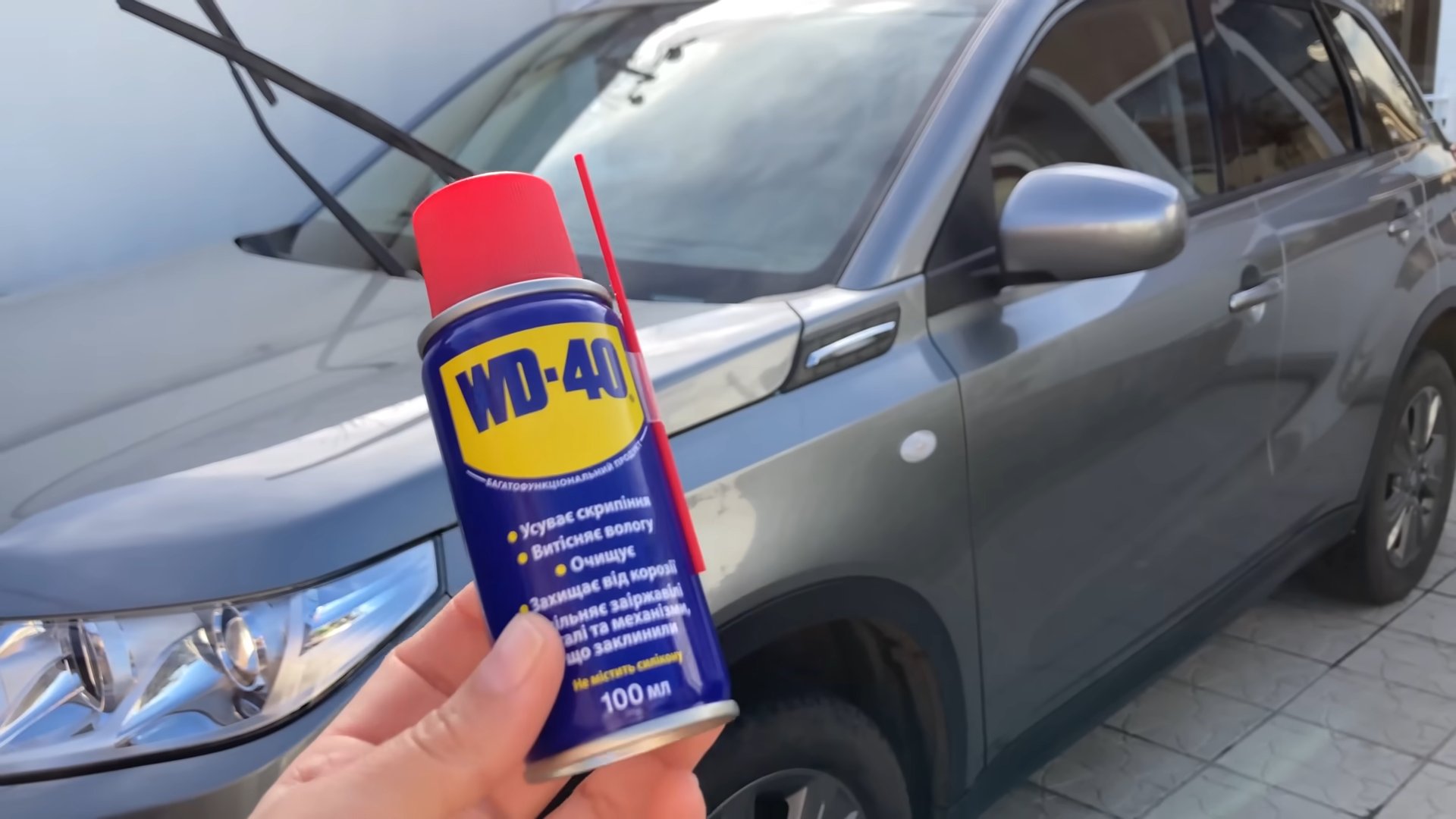
Unlock the Power of WD-40: Beyond Squeaky Hinges – Car Hacks You Need to Know!
Hey there, fellow car enthusiasts! We all know WD-40 as the go-to solution for silencing those annoying squeaks around the house. But did you know this magical spray has a ton of uses for your car too? I’m talking about hacks that can save you time, money, and a whole lot of frustration. Let’s dive into some of my favorite WD-40 car hacks!
Cleaning and Protecting Your Car’s Exterior
WD-40 isn’t just for mechanical issues; it can also work wonders on your car’s appearance. Before you start, remember to always test WD-40 on an inconspicuous area first to ensure it doesn’t damage the paint or finish.
Removing Bugs and Tar
Those pesky bug splatters and stubborn tar spots can be a real pain to remove. Here’s how WD-40 can help:
1. Spray it on: Generously spray WD-40 directly onto the affected areas. Make sure to cover the bugs and tar completely.
2. Let it sit: Allow the WD-40 to sit for a few minutes (around 5-10 minutes should do the trick). This gives it time to penetrate and loosen the grime.
3. Wipe it away: Using a soft, clean microfiber cloth, gently wipe away the bugs and tar. You might need to apply a little pressure, but avoid scrubbing too hard to prevent scratching the paint.
4. Wash it off: Once you’ve removed the bugs and tar, wash the area with soap and water to remove any remaining WD-40 residue. This is important to prevent dirt from sticking to the area later.
5. Dry and admire: Dry the area with a clean towel and admire your bug-free, tar-free car!
Removing Road Grime and Salt
Especially during winter, road grime and salt can wreak havoc on your car’s paint. WD-40 can help protect it:
1. Rinse the car: Start by rinsing your car with water to remove any loose dirt and debris.
2. Spray WD-40: Spray a light coat of WD-40 onto the lower panels of your car, especially around the wheel wells and rocker panels. These areas are most susceptible to road grime and salt.
3. Wipe it down (optional): You can either leave the WD-40 on as a protective layer or wipe it down with a clean cloth. If you choose to wipe it down, it will leave a thin, protective film.
4. Reapply as needed: Reapply WD-40 after washing your car, especially during winter months, to maintain the protective barrier.
Shining Your Chrome
Want to give your chrome trim a little extra shine? WD-40 can help with that too!
1. Clean the chrome: First, clean the chrome with soap and water to remove any dirt or grime.
2. Spray WD-40: Lightly spray WD-40 onto a clean microfiber cloth.
3. Wipe the chrome: Gently wipe the chrome with the WD-40-soaked cloth.
4. Buff it out: Use a clean, dry microfiber cloth to buff the chrome to a brilliant shine.
Solving Common Car Problems
WD-40 isn’t just for cleaning; it can also help with a variety of mechanical and electrical issues.
Freeing Stuck Lug Nuts
Struggling to remove those stubborn lug nuts when changing a tire? WD-40 to the rescue!
1. Apply WD-40: Spray WD-40 directly onto the lug nuts, making sure to get it into the threads.
2. Let it soak: Allow the WD-40 to soak for at least 15-20 minutes. This will help loosen the rust and corrosion that’s causing the lug nuts to stick.
3. Try again: Using your lug wrench, try loosening the lug nuts again. You should find that they come off much easier now.
4. Repeat if necessary: If the lug nuts are still stuck, repeat the process, allowing the WD-40 to soak for a longer period of time.
Waterproofing Your Distributor Cap
If you’re experiencing engine misfires in wet weather, your distributor cap might be getting wet. WD-40 can help waterproof it:
1. Locate the distributor cap: Find the distributor cap on your engine. If you’re not sure where it is, consult your car’s owner’s manual.
2. Spray WD-40: Lightly spray WD-40 around the outside of the distributor cap, focusing on the areas where the cap meets the distributor.
3. Wipe off excess: Wipe off any excess WD-40 with a clean cloth.
4. Test it out: Start your engine and see if the misfires have stopped. This trick can help keep moisture out and prevent electrical problems.
Preventing Rust
Rust is the enemy of any car owner. WD-40 can help prevent it from forming:
1. Identify rust-prone areas: Identify areas on your car that are prone to rust, such as the undercarriage, wheel wells, and any areas where the paint is chipped or scratched.
2. Clean the area: Clean the area with soap and water to remove any dirt or debris.
3. Apply WD-40: Spray a light coat of WD-40 onto the area.
4. Wipe off excess: Wipe off any excess WD-40 with a clean cloth.
5. Reapply regularly: Reapply WD-40 regularly, especially during winter months, to maintain the protective barrier.
Loosening Sticky Car Locks
Having trouble getting your key into the car lock? WD-40 can help loosen things up:
1. Spray WD-40: Carefully spray a small amount of WD-40 directly into the keyhole of the lock.
2. Insert and remove key: Insert your key into the lock and remove it several times to distribute the WD-40.
3. Wipe off excess: Wipe off any excess WD-40 from the key and the lock.
Hey there, fellow car enthusiasts! We all know WD-40 as the go-to solution for silencing those annoying squeaks around the house. But did you know this magical spray has a ton of uses for your car too? I’m talking about hacks that can save you time, money, and a whole lot of frustration. Let’s dive into some of my favorite WD-40 car hacks!
Cleaning and Protecting Your Car’s Exterior
WD-40 isn’t just for mechanical issues; it can also work wonders on your car’s appearance. Before you start, remember to always test WD-40 on an inconspicuous area first to ensure it doesn’t damage the paint or finish.
Removing Bugs and Tar
Those pesky bug splatters and stubborn tar spots can be a real pain to remove. Here’s how WD-40 can help:
1. Spray it on: Generously spray WD-40 directly onto the affected areas. Make sure to cover the bugs and tar completely.
2. Let it sit: Allow the WD-40 to sit for a few minutes (around 5-10 minutes should do the trick). This gives it time to penetrate and loosen the grime.
3. Wipe it away: Using a soft, clean microfiber cloth, gently wipe away the bugs and tar. You might need to apply a little pressure, but avoid scrubbing too hard to prevent scratching the paint.
4. Wash it off: Once you’ve removed the bugs and tar, wash the area with soap and water to remove any remaining WD-40 residue. This is important to prevent dirt from sticking to the area later.
5. Dry and admire: Dry the area with a clean towel and admire your bug-free, tar-free car!
Removing Road Grime and Salt
Especially during winter, road grime and salt can wreak havoc on your car’s paint. WD-40 can help protect it:
1. Rinse the car: Start by rinsing your car with water to remove any loose dirt and debris.
2. Spray WD-40: Spray a light coat of WD-40 onto the lower panels of your car, especially around the wheel wells and rocker panels. These areas are most susceptible to road grime and salt.
3. Wipe it down (optional): You can either leave the WD-40 on as a protective layer or wipe it down with a clean cloth. If you choose to wipe it down, it will leave a thin, protective film.
4. Reapply as needed: Reapply WD-40 after washing your car, especially during winter months, to maintain the protective barrier.
Shining Your Chrome
Want to give your chrome trim a little extra shine? WD-40 can help with that too!
1. Clean the chrome: First, clean the chrome with soap and water to remove any dirt or grime.
2. Spray WD-40: Lightly spray WD-40 onto a clean microfiber cloth.
3. Wipe the chrome: Gently wipe the chrome with the WD-40-soaked cloth.
4. Buff it out: Use a clean, dry microfiber cloth to buff the chrome to a brilliant shine.
Solving Common Car Problems
WD-40 isn’t just for cleaning; it can also help with a variety of mechanical and electrical issues.
Freeing Stuck Lug Nuts
Struggling to remove those stubborn lug nuts when changing a tire? WD-40 to the rescue!
1. Apply WD-40: Spray WD-40 directly onto the lug nuts, making sure to get it into the threads.
2. Let it soak: Allow the WD-40 to soak for at least 15-20 minutes. This will help loosen the rust and corrosion that’s causing the lug nuts to stick.
3. Try again: Using your lug wrench, try loosening the lug nuts again. You should find that they come off much easier now.
4. Repeat if necessary: If the lug nuts are still stuck, repeat the process, allowing the WD-40 to soak for a longer period of time.
Waterproofing Your Distributor Cap
If you’re experiencing engine misfires in wet weather, your distributor cap might be getting wet. WD-40 can help waterproof it:
1. Locate the distributor cap: Find the distributor cap on your engine. If you’re not sure where it is, consult your car’s owner’s manual.
2. Spray WD-40: Lightly spray WD-40 around the outside of the distributor cap, focusing on the areas where the cap meets the distributor.
3. Wipe off excess: Wipe off any excess WD-40 with a clean cloth.
4. Test it out: Start your engine and see if the misfires have stopped. This trick can help keep moisture out and prevent electrical problems.
Preventing Rust
Rust is the enemy of any car owner. WD-40 can help prevent it from forming:
1. Identify rust-prone areas: Identify areas on your car that are prone to rust, such as the undercarriage, wheel wells, and any areas where the paint is chipped or scratched.
2. Clean the area: Clean the area with soap and water to remove any dirt or debris.
3. Apply WD-40: Spray a light coat of WD-40 onto the area.
4. Wipe off excess: Wipe off any excess WD-40 with a clean cloth.
5. Reapply regularly: Reapply WD-40 regularly, especially during winter months, to maintain the protective barrier.
Loosening Sticky Car Locks
Having trouble getting your key into the car lock? WD-40 can help loosen things up:
1. Spray WD-40: Carefully spray a small amount of WD-40 directly into the keyhole of the lock.
2. Insert and remove key: Insert your key into the lock and remove it several times to distribute the WD-40.
3. Wipe off excess: Wipe off any excess WD-40 from the key and the lock.
4. Test the lock: Try locking and unlocking the door to see if the lock is working more smoothly.
Cleaning Battery Terminals
Corrosion on your battery terminals can prevent your car from starting. WD-40 can help clean them:
1. Disconnect the battery: Disconnect the negative terminal first, then the positive terminal.
2. Spray WD-40: Spray WD-40 onto the corroded terminals.
3. Scrub the terminals: Use a wire brush or sandpaper to scrub away the corrosion.
4. Wipe clean: Wipe the terminals clean with a cloth.
5. Reconnect the battery: Reconnect the positive terminal first, then the negative terminal.
Removing Sticky Residue
Whether it’s old sticker residue or adhesive from tape, WD-40 can help remove it:
1. Spray WD-40: Spray WD-40 directly onto the sticky residue.
2. Let it sit: Allow the WD-40 to sit for a few minutes to soften the adhesive.
3. Wipe it away: Using a clean cloth, gently wipe away the residue. You may need to apply a little pressure.
4. Clean the area: Clean the area with soap and water to remove any remaining WD-40 residue.
Interior Car Care with WD-40 (Use with Caution!)
While WD-40 is primarily known for its exterior and mechanical uses, it can also be used sparingly for certain interior tasks. However, be extremely cautious when using WD-40 inside your car, as it can damage some surfaces. Always test it on an inconspicuous area first!
Cleaning Scuff Marks on Leather or Vinyl (Test First!)
Scuff marks on leather or vinyl seats can be unsightly. WD-40 *might* help, but proceed with caution:
1. Test on a hidden area: Before applying WD-40 to the scuff mark, test it on a hidden area of the leather or vinyl to ensure it doesn’t damage the material.
2. Spray WD-40: If the test is successful, lightly spray WD-40 onto a clean microfiber cloth.
3. Gently wipe the scuff mark: Gently wipe the scuff mark with the WD-40-soaked cloth.
4. Wipe off excess: Wipe off any excess WD-40 with a clean, dry microfiber cloth.
5. Condition the leather (if applicable): If you’re cleaning leather, apply a leather conditioner after cleaning to restore moisture and prevent cracking
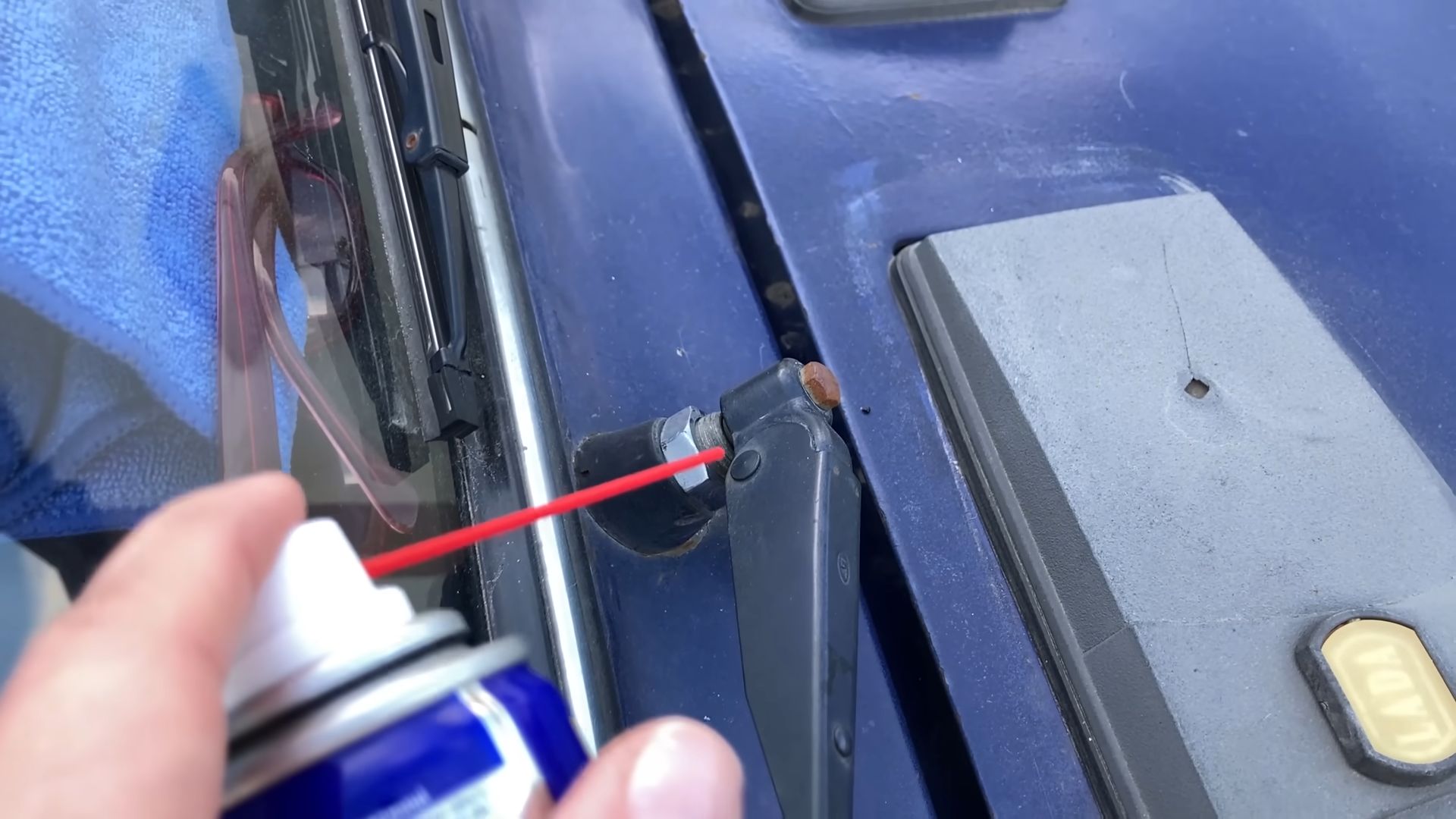
Conclusion
So, there you have it! This simple yet incredibly effective DIY trick using WD40 can truly revolutionize your car care routine. We’ve explored how this versatile product can tackle everything from stubborn grime and sticky residue to squeaky hinges and even act as a water repellent. It’s a cost-effective, readily available solution that can save you time, money, and a whole lot of frustration.
Why is this WD40 car hack a must-try? Because it’s more than just a quick fix; it’s a preventative measure. By regularly applying WD40 to vulnerable areas, you’re not only cleaning and lubricating but also protecting your car from the elements and preventing future problems. Think of it as a proactive approach to car maintenance, ensuring your vehicle stays in top condition for longer.
But don’t stop there! Experiment with different applications and variations to discover what works best for your specific needs. For instance, try using WD40 Specialist Automotive Degreaser for tougher grease stains or WD40 Specialist Silicone Lubricant for rubber seals and weather stripping. You can even use a microfiber cloth to buff the surface after applying WD40 for an extra shine. The possibilities are endless!
We’re confident that once you experience the transformative power of this WD40 car trick, you’ll wonder how you ever lived without it. It’s a game-changer for car enthusiasts and everyday drivers alike.
Now, it’s your turn! We encourage you to give this DIY trick a try and see the amazing results for yourself. Don’t be afraid to experiment and find new ways to utilize WD40’s incredible versatility. And most importantly, share your experiences with us! We’d love to hear your success stories, tips, and variations in the comments below. Let’s build a community of WD40 car care experts and help each other keep our vehicles looking and performing their best. Your insights could be invaluable to other readers, so don’t hesitate to share your knowledge. Let’s unlock the full potential of WD40 together!
Frequently Asked Questions (FAQs)
Is WD40 safe to use on all car surfaces?
While WD40 is generally safe for most car surfaces, it’s always a good idea to test it on an inconspicuous area first, especially on painted surfaces or delicate materials like leather or vinyl. Avoid spraying WD40 directly onto brake rotors or pads, as this can compromise your braking performance. For specific materials, consult your car’s owner’s manual or a professional detailer. Remember, WD40 is a solvent and lubricant, so prolonged exposure to certain materials might cause discoloration or damage. When in doubt, err on the side of caution.
Can WD40 really remove scratches from my car’s paint?
WD40 can temporarily minimize the appearance of minor scratches by filling them in and adding a layer of lubrication, making the surface appear smoother and more reflective. However, it’s important to understand that WD40 doesn’t actually remove the scratches; it simply masks them. The effect is temporary and will fade over time, especially after washing the car. For deeper scratches that penetrate the clear coat or paint, professional scratch removal techniques, such as polishing or paint correction, are necessary. WD40 is a good quick fix for superficial blemishes, but it’s not a permanent solution for significant paint damage.
How often should I apply WD40 to my car’s hinges and locks?
The frequency of WD40 application depends on several factors, including the climate you live in, how often you use your car, and the condition of your hinges and locks. As a general guideline, applying WD40 every 3-6 months is a good starting point. If you live in a humid or salty environment, or if you frequently use your car in dusty or dirty conditions, you may need to apply it more often. Listen to your car – if you notice squeaking or stiffness in the hinges or locks, it’s a sign that they need lubrication. Regular application of WD40 will help prevent corrosion and ensure smooth operation.
Will WD40 damage my car’s rubber seals or weather stripping?
While WD40 can be used on rubber seals and weather stripping, it’s important to use it sparingly and avoid prolonged exposure. WD40 can dry out rubber over time, causing it to crack or become brittle. For rubber components, it’s best to use a silicone-based lubricant specifically designed for rubber and plastic. Silicone lubricants provide long-lasting protection without damaging the rubber. If you do use WD40 on rubber, be sure to wipe off any excess and reapply a silicone lubricant afterward to maintain the rubber’s flexibility and prevent drying.
Is WD40 safe for cleaning my car’s engine?
While WD40 can be used to clean certain parts of your car’s engine, it’s crucial to exercise caution and avoid spraying it on sensitive components such as electrical connectors, sensors, or belts. WD40 is flammable, so never use it on a hot engine or near open flames. For engine cleaning, it’s best to use a dedicated engine degreaser that is specifically formulated to remove grease and grime without damaging engine components. Always follow the manufacturer’s instructions and wear appropriate safety gear, such as gloves and eye protection.
Can I use WD40 to protect my car from rust?
Yes, WD40 can provide a temporary layer of protection against rust by displacing moisture and creating a barrier against the elements. However, it’s not a long-term solution for rust prevention. For more effective rust protection, consider using a rust inhibitor or sealant specifically designed for automotive applications. These products provide a more durable and long-lasting barrier against corrosion. WD40 can be used as a quick fix to prevent rust from forming on exposed metal surfaces, but it should be followed up with a more robust rust protection treatment for optimal results.
What are some alternative uses for WD40 on my car besides cleaning and lubrication?
WD40 has a wide range of alternative uses for car care, including:
* Removing tar and road grime from the paint.
* Loosening rusted bolts and screws.
* Cleaning and protecting chrome surfaces.
* Preventing ice from forming on door locks in winter.
* Removing sticky residue from stickers and decals.
* Waterproofing electrical connections (use sparingly).
* Cleaning and polishing headlights (use with caution and test first).
Remember to always test WD40 on an inconspicuous area before applying it to a larger surface, and use it sparingly to avoid any potential damage.
Where can I buy WD40?
WD40 is widely available at most hardware stores, auto parts stores, home improvement stores, and online retailers. You can also find it at some supermarkets and discount stores. It’s a readily accessible product that is easy to find and purchase.
What type of WD40 should I use for my car?
While the original WD40 formula is versatile and can be used for many car care tasks, WD40 also offers specialized products specifically designed for automotive applications. These include WD40 Specialist Automotive Degreaser, WD40 Specialist Silicone Lubricant, and WD40 Specialist Penetrant. These specialized products offer enhanced performance and are formulated to address specific automotive needs. Consider using these specialized products for optimal results, but the original WD40 formula is still a valuable tool for general car maintenance.

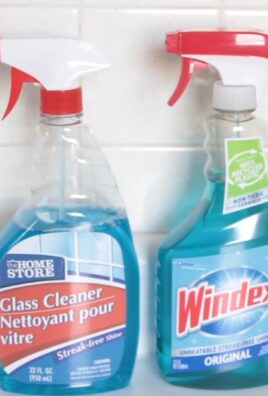
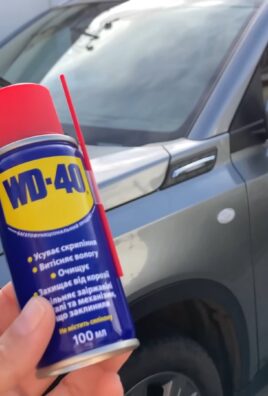
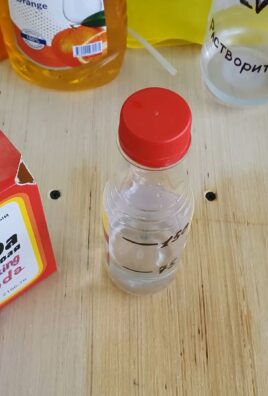
Leave a Comment